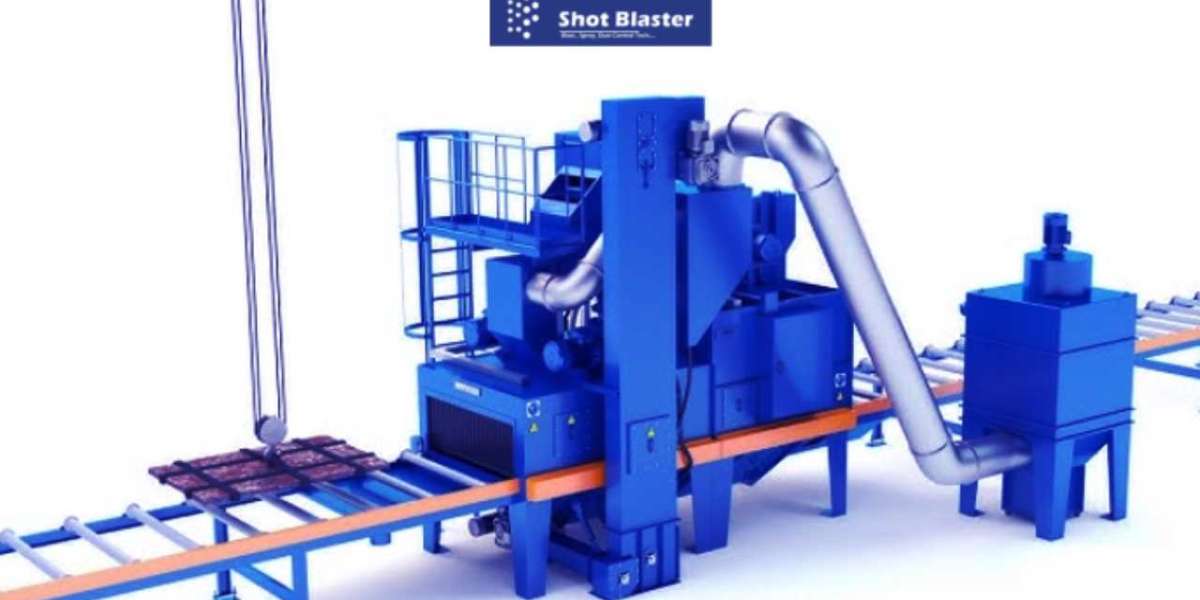Shot blasting machines are integral to surface preparation across various industries, utilizing high-speed abrasive materials to clean, strengthen, or polish surfaces. Understanding the key components of these machines is essential for optimal operation and maintenance. Below is a comprehensive list of the primary parts of a shot blasting machine:
1. Blast Wheel
The blast wheel is the heart of the shot blasting machine, responsible for propelling abrasive media at high speeds toward the workpiece. Its efficiency and quality significantly influence the cleaning effect and overall performance of the machine.
2. Impeller
Positioned within the blast wheel assembly, the impeller distributes the abrasive media to the control cage and blast wheel. Its proper functioning ensures a consistent flow of media, directly impacting the effectiveness of the blasting process.
3. Control Cage
The control cage houses the impeller and regulates its rotational speed, ensuring the correct direction and flow of the abrasive media. Proper maintenance of the control cage is vital for achieving desired blasting results.
4. Abrasive Media
These are the materials, such as steel shot or grit, used to impact the surface being treated. The choice of abrasive affects the finish quality and efficiency of the cleaning process.
5. Blast Cabinet
The blast cabinet encloses the blasting area, containing the abrasive media and preventing it from escaping into the environment. Constructed from durable materials and lined with wear-resistant alloys, the cabinet ensures safe and efficient operation.
6. Dust Collector
This system extracts and filters airborne particles generated during blasting, maintaining a clean and safe working environment. Effective dust collection is crucial for operator safety and equipment longevity.
7. Separator
The separator cleans the abrasive media before it re-enters the blast wheel, removing contaminants and ensuring that only clean media is reused. This process maintains the quality and consistency of the blasting operation.
8. Elevator and Abrasive Recovery System
After use, abrasive media is collected and transported back to the separator by the elevator system. This recovery process enhances efficiency and reduces waste by allowing the reuse of media.
9. Work Handling Mechanism
Depending on the machine type and workpiece specifications, various mechanisms are employed to transport items through the blasting process. These can include conveyors, turntables, or hanger systems, facilitating consistent and thorough treatment.
10. Blast Nozzle
In machines utilizing air blasting, the blast nozzle directs the flow of abrasive media onto the workpiece. The design and condition of the nozzle affect the precision and effectiveness of the blasting process.
11. Mixing Tube
The mixing tube combines the abrasive media with compressed air in air blasting systems, ensuring a consistent mixture that is then propelled through the blast nozzle. Proper mixing is essential for uniform surface treatment.
12. Mushroom Valve (Pop-Up Valve)
In portable shot blasting machines, the mushroom valve controls the flow of abrasive media into the pressure vessel. It ensures proper sealing during pressurization and allows media refilling when depressurized, facilitating continuous operation.
13. Liners
Protective liners are installed inside the blast cabinet and other high-wear areas to shield the machine's structure from abrasion. Regular inspection and replacement of liners help maintain the machine's integrity and prolong its service life.
Understanding these components and their functions enables operators to maintain abrasive shot blasting machines effectively, ensuring optimal performance and extending equipment lifespan.

